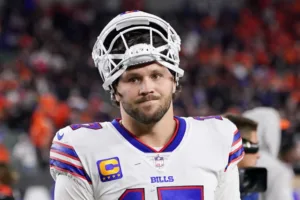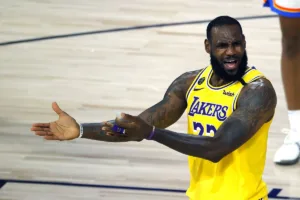Adam Silver and the NBA’s front office must go back to the drawing board, after four challenging years of the G-League Ignite. While several G-League front office members, including the president Shareef Abdur-Rahim, cite the NIL as a major factor in the teams’ demise, it is truly only the tip of the iceberg in understanding what went wrong. If watching the outmatched Ignite this year has taught us anything, it is that young American basketball players are not being put in a position to succeed. The narrative used to be that the rest of the world is catching up to the US in basketball reputation, but today, a strong argument can be made that other countries are not just nipping at the American tails, but surpassing them altogether.
When comparing European and American basketball youth development, there are clues as to why the gap of talent has closed in the past 25 years. An easy place to begin pointing the blame, at least in the United States, is the prominence and popularity of AAU programs. While there are certainly effective teams out there who have the children’s best interest at heart, many fall by the wayside. Personally, playing AAU basketball never felt very helpful to my basketball growth. In fact, practicing with my AAU team felt counterproductive to what I thought I was truly there for, which was showcasing my talent to get recruited. In a 2005 interview with ESPN, Kobe Bryant gave his thoughts on the matter saying, “Horrible, terrible AAU basketball. It’s stupid. It doesn’t teach our kids how to play the game at all, so you wind up having players that are big and they bring it up and they do all this fancy crap, and they don’t know how to post.”
In many ways, the undisciplined basketball seen on this year’s G-League Ignite team mirrored much of what Kobe claimed AAU stands for today. For every highlight reel alley-oop fans saw this year, there was a missed box out to gather a defensive rebound. For every scintillating scoop layup after a crafty crossover, a basket was given up because no one was back on defense. Don’t get me wrong, there were glimmers of basketball brilliance this year during the Ignite season. Watching draft prospect Ron Holland storm down the floor like he’s dancing on water stepping into a thunderous slam made me an immediate fan. Seeing 6’10’’ Matas Buzelis break down his defender with a strong drive, only to swing the ball behind his back while his defender gets sent to another dimension put me in awe. Veterans past their prime like Norris Cole and Jeremy Pargo took the leadership reigns to mentor the younger guys making the team feel purposeful and impactful. Yet, watching them lose repeatedly still felt like it was a disservice to many of the team members who decided to forgo college for the unique opportunity.
This article is not an indictment of the G-League Ignite effectiveness, as much as it is meant to call out the strategies in which the powers that be are preparing youth for the next level. Across AAU programs nationwide, winning takes a back seat to garnering attention from coaches and scouts at the next level. Surely, winning games is important to any competitor, but losing a game can always be cured with a coach intercepting a player before leaving the court, telling them that they liked what they saw. Additionally, scoring is held at such a premium in today’s game that young players get discouraged when they may not be as naturally gifted at this skill. Players like Rasheed Wallace have publicly admitted on various podcasts that many of these young guys only need to focus on defense and rebounding to get to the next level. Although it sounds easy in theory, there are not many kids naturally drawn to throwing their body around in the paint for a loose ball. One might argue that getting recruited is always going to have its inherent pressures, but if AAU programs are not designed to foster developing players in other facets of the game besides putting the ball in the basket; what is the point?
A major concern that needs to be addressed is scheduling. Thinking back to my AAU days, the season would start right after high school basketball ended, with games every weekend. We would have one or two practices stuffed between a six-game weekend. This pattern would continue for three to four months. Now, playing games, especially in AAU or pickup, is important for growth. It is a science lab to perform trial and error experiments, seeing what works, what doesn’t, and everything in between. But without those tough stop-and-go practices, discussing the intricacies of the game, players often struggle to find their niche. And in the blink of an eye (and 50 games packed into a few short months), the AAU season is over.
To combat many of these issues, basketball and soccer leagues in Europe have taken to financially committing to players year-round. The obligation of these programs helps establish trust amongst its’ players, that can be long-lasting and reciprocal. Part of what makes AAU so controversial are the coaches it attracts. In today’s programs, it feels just as easy to become an Uber driver as it is to lead a group of children on country wide tournament runs. Something does not feel right about that. Dennis Scott, a long-time NBA player, recalls his coaches being retired police officers and teachers within the neighborhood. These individuals signed up not to make an easy buck, but to aid in the development of players in their community. Hoops legend Schea Cotton, who owns an AAU program himself, knows firsthand what it was like to be manipulated by coaches growing up. As the top 15-year-old in the nation, Cotton traveled the world with his AAU squad sponsored by Nike. He had direct communication with representatives that could get him any gear he or his family wished for. In many instances Cotton would return home to have boxes of gear, and even women greeting him on his doorstep, vying for his commitment to various sponsors. His coach was making half a million dollars for his services six months out of the year. Making a living wage to help youth basketball improve is totally acceptable, but when money becomes the sole focus rather than improving the lives of children, a vetting process should be implemented to regulate these impurities (That means you, NBA).
Teams in Europe have a completely different emphasis in their programs, which have translated to some of the best NBA players of today and yesterday. Regardless of age, teams will play in games throughout the long season, but only in marquee events. Practice and player development take full precedence. Coaches are hired to be full-time employees of the programs, which means players have a consistent and reliable mentor to lead them in their development. This allows players to have faith that their coach is going to be there for them long term.
These relationships along with a healthy balance of games and practice are not just for show either. It is leading to real results in producing talented ball players all over the globe. In 2021, the Tokyo Olympics boasted over 70 international players that had at least one or more years of NBA experience. France had seven of these players. Even Nigeria, a country not necessarily known for NBA development, had seven players as well. More and more of the best NBA players are from overseas, and almost all of them have unique skill sets. From yesterday’s stars Toni Kukoc and Vlade Divac to today’s Luka Doncic and “The Joker,” each of these players performs at their speed. Physical attributes that they were born with may help, but footwork, positioning, and making the correct reads on the basketball floor are the foundational skills that their games are based on.
Adam Silver and the NBA’s front office have a responsibility to shape how basketball skill development looks in America for the future. Talent, curiosity, and competitiveness for basketball are so heavily ingrained in society, that the only thing lacking is structure. A more focused approach in harnessing these skills at an early stage can lead to a better brand of basketball on American soil. Shifting the aim away from fleeting, money grabbing coaches to commitment and promises to young children that they will become better players is where the journey begins.
Photo Creds: Yahoo Sports
Check out my instagram below





